What's New
Displaying results 2101 - 2110 of 4052
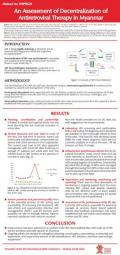
Resource | Publications,
ART is being rapidly scaled up in Myanmar, led by National AIDS Programme (NAP) and supported by many partners. Decentralization of HIV care and treatment to township and peripheral levels brings services closer to where those in need reside. ART decentralization assessment conducted to 13 decentralized ART sites in March 2015 by a joint team of national and international experts.

Resource | Publications,
Human migration, defined as the “movement of a person or a group of persons, either across an international border, or within a State”, has been increasing over the last several decades (1). According to current United Nations estimates, there are approximately 232 million international migrants worldwide, with over 71 million living in Asia, and an additional 740 million internal migrants moving within their own countries (2,3). The total number of migrants worldwide is greater than the population of all but the world’s two most-populous nations.
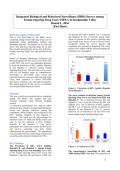
Resource | Fact Sheets,
This is the first round of the IBBS survey conducted among Female Injecting Drug Users in Kathmandu Valley (Kathmandu, Lalitpur and Bhaktapur districts). The females of 16 years and above who had been injecting drugs for at least three months preceding the survey were defined as Female Injecting Drug Users and enrolled in the survey.
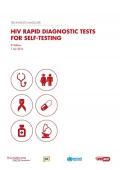
Resource | Publications,
This report presents HIV self-testing (HIVST) as an innovative strategy with great potential to contribute to achieving the United Nations (UN) 90–90–90 targets by 2020. It provides updates on the landscape of technologies for HIVST originally presented in the first edition of the UNITAID/WHO Landscape on HIV self-testing (December 2015), as well as a summary of the existing and emerging market and projections of the demand for, and supply of, HIV rapid diagnostic tests for self-testing. The information in this report is intended for manufacturers, donors, national programmes, researchers and other global health stakeholders who are exploring the potential role of HIVST.
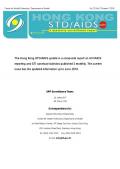
Resource | Publications,
The Hong Kong STD/AIDS update is a composite report on HIV/AIDS reporting and STI caseload statistics published 3 monthly. The current issue has the updated information up to June 2016.
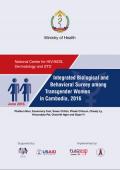
Resource | Publications,
While the overall prevalence of new HIV infections and mortality rate among people living with HIV (PLHIV) continue to decline in Cambodia, risky sexual behaviors and subsequent new HIV infections among transgender (TG) women continue to be of great concerns. To reduce HIV prevalence among TG women, it is crucial to track the changes in prevalence, risk behaviors, and factors associated with HIV infection to devise more responsive and tailor-made interventions. This Integrated Biological and Behavioral Survey (TG-IBBS 2016) investigates the current HIV prevalence, risky sexual behaviors, and factors associated with HIV infection among TG women in Cambodia. Where allowable, the results of this study are compared with those of the first one conducted in 2012. This study provides further evidence to confirm whether Cambodia is on track towards meeting the goals in the fight against HIV and whether the country’s “3.0” (Three Zeros) goal will be realized by 2020.
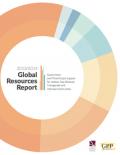
Resource | Publications,
This report provides an overview of institutional funding for LGBTI issues around the world. It captures data on funding from foundations, intermediaries, corporations, government agencies, and multilateral agencies, but does not include individual donors. It covers funding provided by these institutions in calendar years 2013 and 2014 for LGBTI-focused organizations and for projects that specifically focus on LGBTI communities.
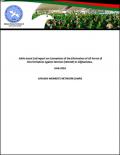
Resource | Publications,
The Afghan Women's Network (AWN) produced this NGO (Shadow) CEDAW report. As a women's rights network, AWN focuses on women’s equality and empowerment at the policy level and has, over the years, led several initiatives to this end. A CEDAW Initiative Committee (CIC), comprised of twelve members, was established by AWN to develop a joint plan on producing shadow reports.
The purpose of this report is to provide analysis of issues that have been identified in the official government report submitted to the CEDAW Committee in 2011, while also highlighting concerns that have been overseen and following up on developments over the years. The present report is a follow up report that focuses on the continued lack of implementation of existing laws and policy guidelines to eliminate all forms of discrimination against women in Afghanistan.
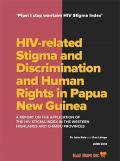
Resource | Publications,
This report covers research conducted on HIV stigma and discrimination using the Stigma Index in the Papua New Guinea provinces of Western Highlands and Chimbu. The research was funded by a grant from the National AIDS Council. The data contained in this report provides useful information that can be considered as work continues in PNG on HIV-related stigma and discrimination and human rights.
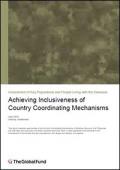
Resource | Publications,
A recent audit of Country Coordinating Mechanisms by the Global Fund’s Office of the Inspector General acknowledged that “significant improvement has been made in the involvement of civil society and affected communities in designing and implementing programs” while at the same time concluding that “membership and meaningful engagement of civil society and key populations is not optimal.” The case studies contained in this collection help illustrate how that significant improvement has been made in specific country contexts.
They are presented here in the hope that they may be an inspiration to Country Coordinating Mechanisms in other country contexts. They also illustrate some of the complexities around achieving the participation of key populations and people living with disease in Country Coordinating Mechanisms. In particular, they demonstrate that "adequate representation" and "meaningful engagement" are not the same thing. While the former might lend itself to being measured by membership quotas, the latter most certainly does not.





